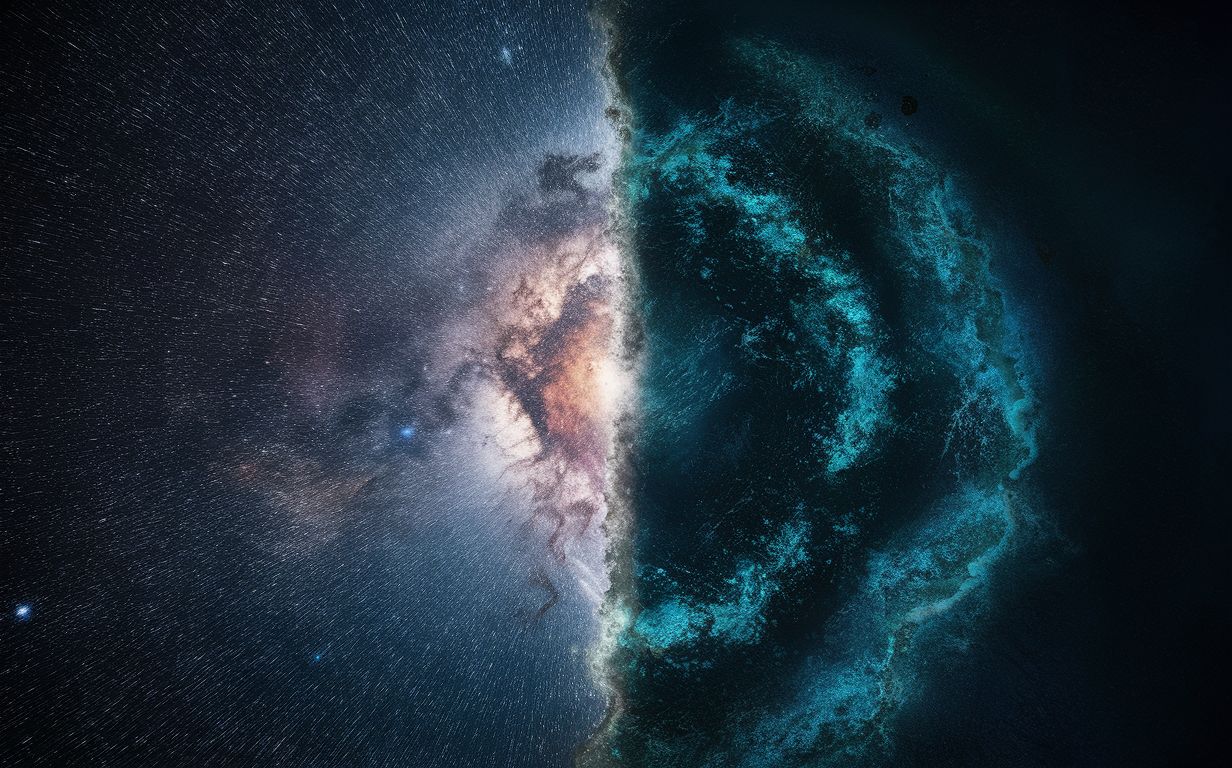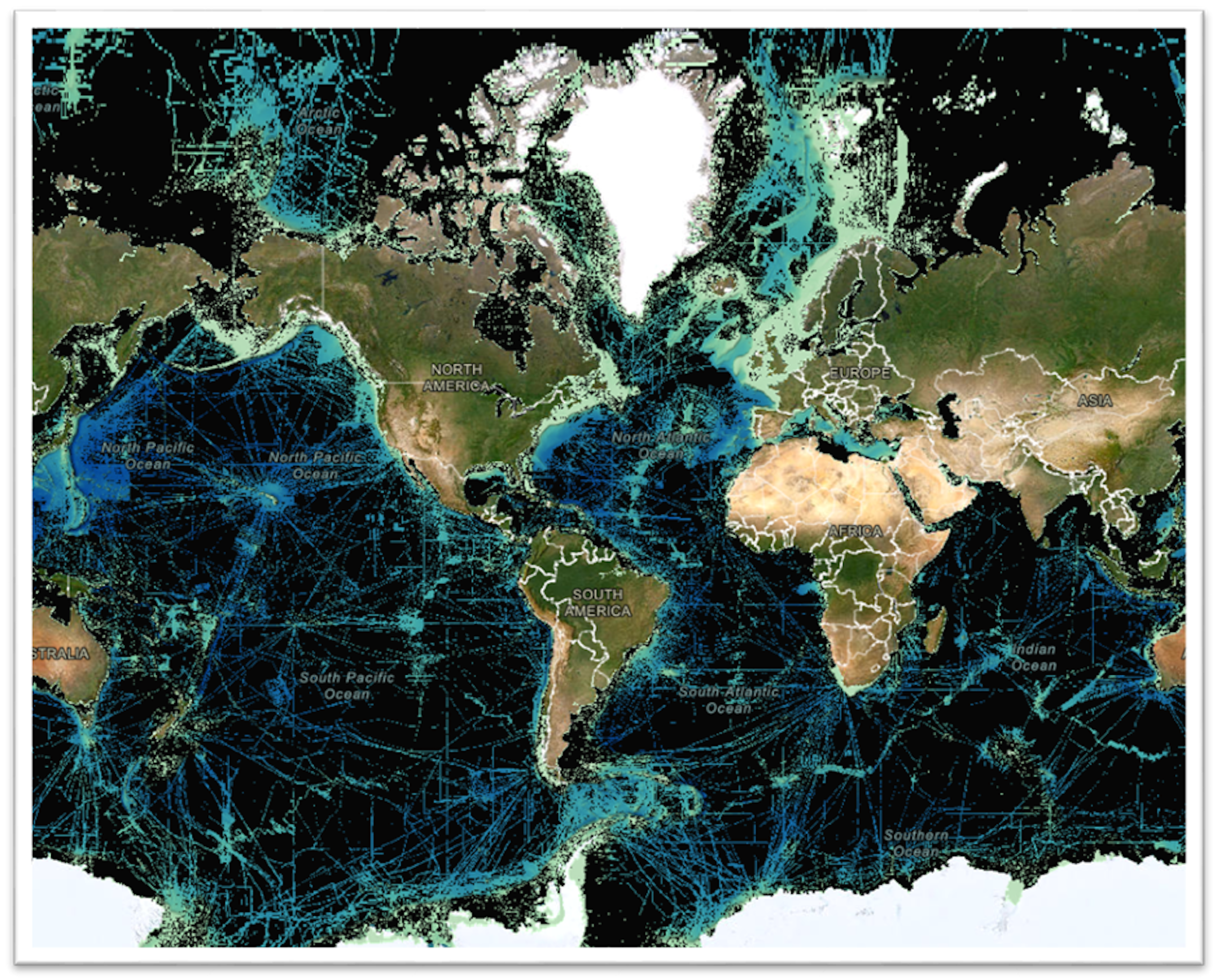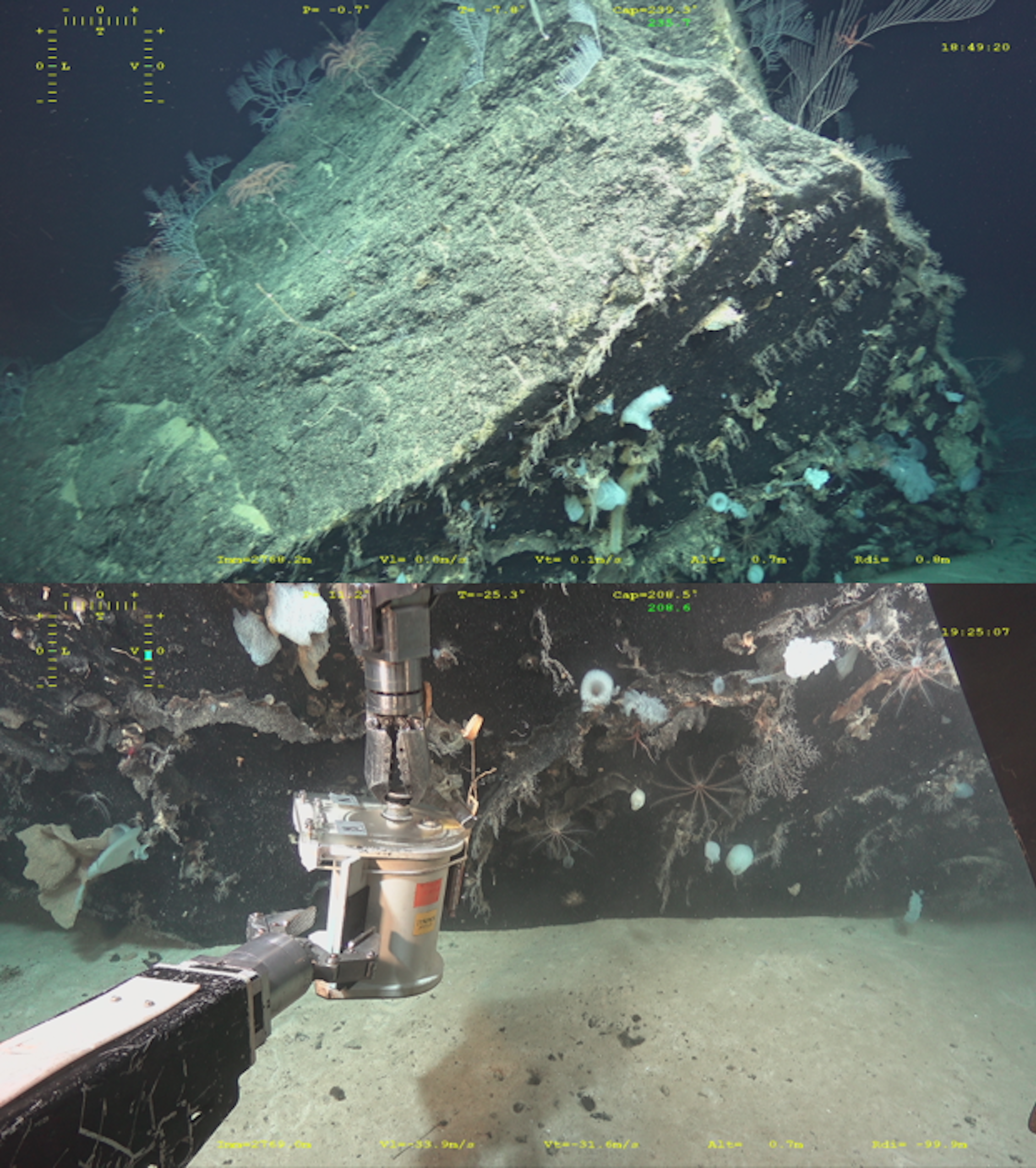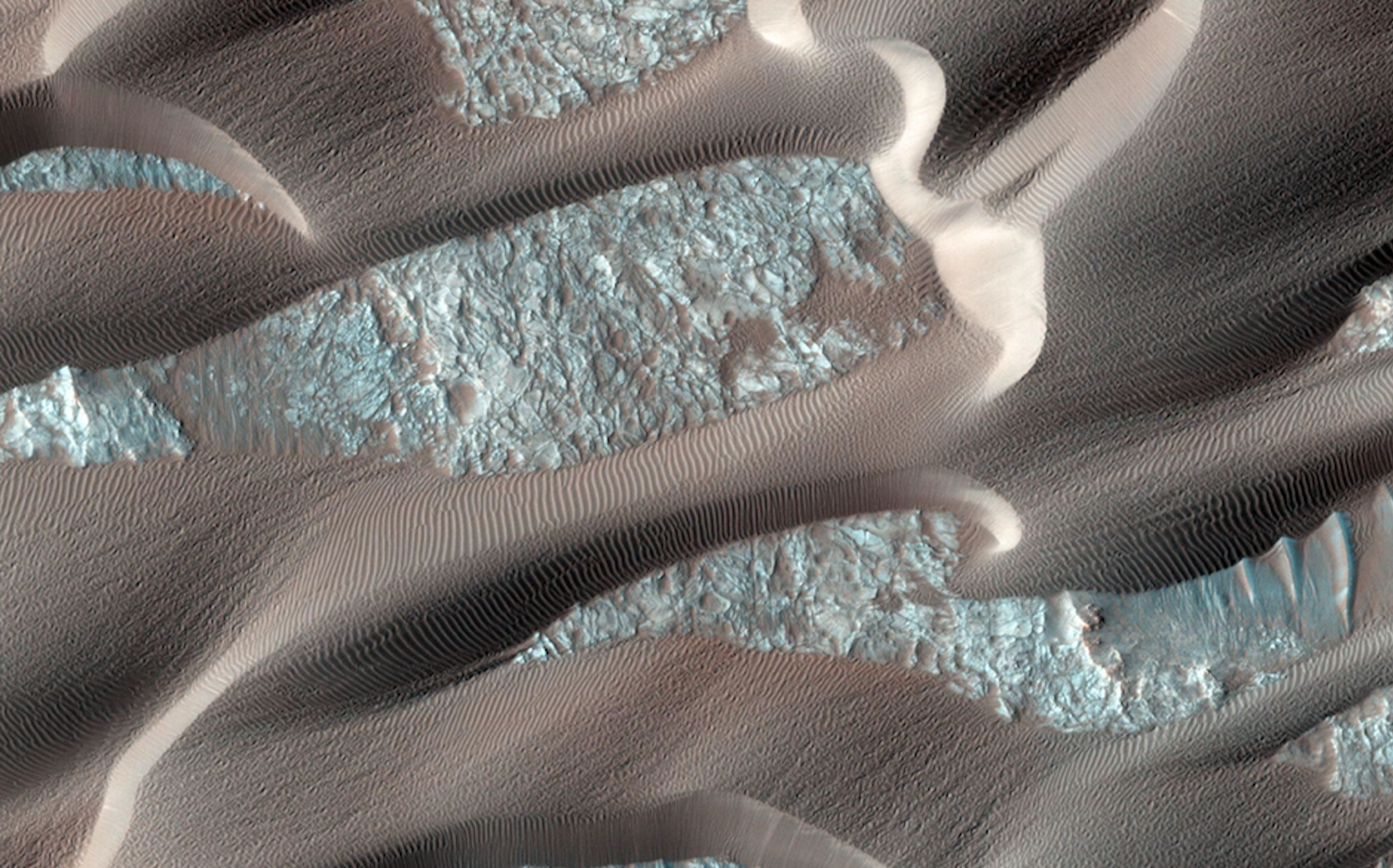Do we know more about space than the ocean depths?
Published by Adrien,
Source: The Conversation under Creative Commons license
Other Languages: FR, DE, ES, PT
Source: The Conversation under Creative Commons license
Other Languages: FR, DE, ES, PT
Follow us on Google News (click on ☆)
The deep-sea and space appear as the last frontiers of humanity. These distant and difficult-to-access realms fascinate us, despite their differences. Is it true that we know more about space than we do about the ocean depths? How do we explore them, and in response to what motivations?

What we know or don't know depends both on the means employed (how we look) and the questions we ask (what we look for). These inquiries refer to the exploratory vocation of science that its current bureaucratization tends to obscure.
The Earth is covered by 70% oceans with an average depth of 12,100 feet (3,700 meters). Look with a mask from the surface, and you will only see the bottom if there are less than 33 feet (10 meters) of water; look at the sky, and the photons that reach you may have traveled millions of light years! Water is the main barrier to knowledge of the ocean depths: electromagnetic waves (light, lasers, radio waves) are quickly absorbed, whereas they propagate over immense distances in space.
Therefore, we can only characterize the oceans indirectly from ships using acoustic sounders or by collecting samples using tools suspended by a cable. Occasionally, inhabited or robotic submersibles are used, which can only observe within a few dozen feet around them using powerful projectors. In 2023, only 25% of the seabed reliefs had been mapped by acoustic methods.
These mapping ships advance at a mere 3 mph (5 km/h), so it would take three centuries to cover the ocean floors entirely at this pace. In the 1990s, a new method roughly estimated ocean depths based on small variations in water surface altitude measured by satellites (altimetry). These are the maps we consult on Google Earth.

Mapping the seabed reliefs - bathymetry. In 2023, about 25% of the ocean floor was mapped at a resolution of 164 feet/pixel (50m/pixel). In black: unmapped areas.
International Gebco program of seabed mapping aiming to gather all worldwide bathymetric data to improve ocean knowledge, Provided by the author
Wherever we search, we discover unique organisms. Deep-sea exploration revealed, for example, living animals whose closest relatives are fossil animals - hence extinct - known only from sedimentary layers on continents!
In the late 1970s, it was discovered that photosynthesis is not the only primary source of living matter. At the base of deep hydrothermal vents, which emit hot and "toxic" fluids, oases of life proliferate thanks to chemosynthetic bacteria capable of producing organic matter without light. Since then, chemosynthesis has also been observed in coastal, terrestrial, and even atmospheric environments!

Images obtained during the Kanadeep2 campaign with the Victor6000 robot at a depth of 9,080 feet (2,768 meters) on the Loyalty Ridge (Southwest Pacific) during dive no. 741. The first image shows a rock covered with animals (corals, sponges, ascidians, echinoderms, etc.). The second image shows the robot's arms used to sample these animals.
Kanadeep2, doi 10.17600/18000883, Provided by the author
The discovery of space
Regarding space, the launch of the Soviet probe Luna 1 in 1959 marks the beginning of the spatial exploration of the Solar System. Sixty years later, all eight planets of the Solar System have been visited by a space probe, as well as the largest satellites of the giant planets. These probes produced images of extraterrestrial landscapes, uninhabitable but incredibly varied.
Exploration using cameras from space quickly expanded with instruments to map the nature of materials (chemical, mineralogical composition, search for organic molecules) while in-situ exploration developed (landers, then rovers, and very recently a small helicopter) for even greater mobility for exploration. It is possible to create geological maps of entire planets without any human having set foot on their soil.
Our knowledge of the Solar System also comes from meteorites, torn away by collisions (impacts) that end their interplanetary journey on our planet's surface. Space missions are also dedicated to sample collection. This was the case with the Apollo missions to the Moon and more recently, the OSIRIS-REx mission, which brought back a sample from the asteroid Bennu. Soon, it will be Mars's turn.
Space probes have reached considerable distances. The New Horizons probe, after flying by Pluto, went to the edges of the Solar System (over 3.7 billion miles or 6 billion km from Earth) to provide images of a small snowman-shaped asteroid (Arrokoth) that tells us about the early moments of planetary formation. But much remains to be explored in search of potentially habitable environments.
Thousands of bodies in the Solar System (asteroids, small satellites of giant planets) are only known from the sunlight they reflect. The distances covered already seem immense, but no man-made space probe has truly left the Sun's sphere of influence, even though Voyager 1 and 2 are well on their way to interstellar space.

Sand dunes observed by the HiRISE instrument on the Mars Reconnaissance Orbiter (MRO) mission. Resolution: 10 inches/pixel (25 cm/pixel). At this resolution, it is possible to observe small ripples on the dunes and even their movement over just a few years (image width: 0.6 miles or 1 km).
NASA/JPL-Caltech/UArizona, Provided by the author
To reach the closest star to us, it is not just a few billion miles that must be covered, but 25 trillion miles (40 trillion km)! For now, it is impossible for us to explore space directly beyond the Solar System other than by the light that the objects populating the universe send back to us.
Cartographically speaking, it is accurate to say that we know the surface of Solar System bodies better than the ocean depths. The funding allocated to the former is more significant (€2 billion went to space exploration in France in 2020, compared to €0.4 billion for oceanic depths). Beyond the Solar System, technological feats allow us to see some details on stars' "surfaces" and reveal the rocky or gaseous nature of exoplanets, but we are far from mapping the hundreds of billions of objects populating our galaxy.
It must be reasserted here: science is largely a matter of exploration, and it is essential to cultivate this fundamental dimension. This exploration is intimately linked to the search for the origins of life, even if other economic or geopolitical stakes also motivate these researches.
Organic molecules discovered outside our planet or the bio and geological processes identified in the dark environments of the ocean depths raise questions about life's ability to develop elsewhere and everywhere in the universe. The exploration of space and the ocean depths are not opposed; they are complementary and nourish one another to understand our origins, rethink our present, and design our future!